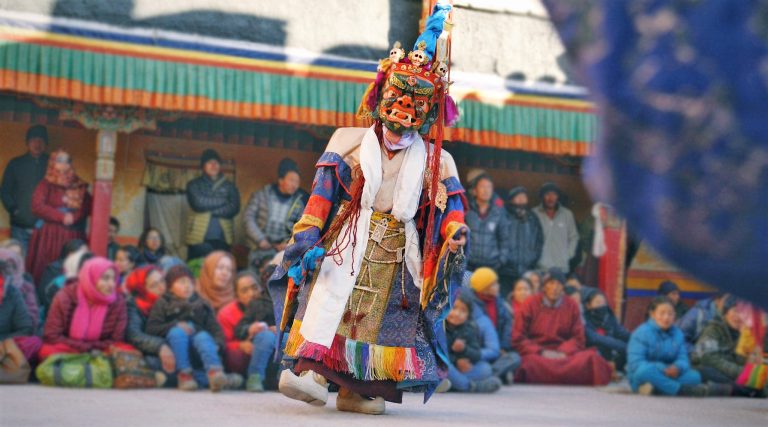Ladakh is rich in culture, community, and quiet wisdom. But for a traveller, it’s easy to cross cultural boundaries without realising it. Whether you’re entering a 500-year-old gompa, sharing space in a mud-brick homestay, or walking through a remote village—how you behave matters. This guide helps you navigate Ladakh respectfully, so your presence enriches rather than disrupts.
Monasteries (or gompas) are not tourist attractions—they are sacred living spaces for monks and pilgrims. Respecting their sanctity is essential.
✅ Do:
Remove shoes before entering prayer halls.
Walk clockwise around prayer wheels, stupas (chortens), and temples.
Keep your voice low—monasteries are places of meditation.
Ask before photographing monks, rituals, or interiors—some spaces are off-limits.
❌ Don’t:
Point your feet at altars or statues—sit cross-legged or with feet tucked under.
Touch religious objects or murals—they are often centuries old and sacred.
Enter private areas (monk quarters, kitchens) unless invited.
Use drones without written permission—many monasteries prohibit it.

Staying with a local family is an authentic way to experience Ladakh—but it comes with responsibilities.
✅ Do:
Greet everyone with “Julley” when entering a home.
Accept tea or food with both hands—it’s a sign of gratitude.
Use water and electricity sparingly. Supplies are limited, especially in winter.
Offer help if you can—helping serve or clear dishes builds connection.
❌ Don’t:
Enter the kitchen without permission—it’s a semi-sacred space in Ladakhi homes.
Leave food on your plate—wastage is deeply frowned upon.
Roam around the house freely—ask before accessing upper floors or storerooms.
Expect Wi-Fi or hot water 24/7—prepare for minimalist comfort.

Village life in Ladakh is close-knit and traditional. Your presence as an outsider is noticed—make it a respectful one.
✅ Do:
Smile and greet elders with “Julley”—a slight bow shows respect.
Speak softly and dress modestly, especially around women and elders.
Ask before taking photos of children or homes.
Show interest in local customs, but don’t interrupt rituals or prayer.
❌ Don’t:
Hand out sweets or money to children—it encourages begging.
Enter homes, temples, or fields without permission.
Drink or party in villages—alcohol is often frowned upon outside Leh.

Gifting and donating can be meaningful, but thoughtless charity does more harm than good.
✅ Welcomed:
Books, stationery, warm clothes, or solar lights for community spaces or schools.
Useful items left behind like sleeping bags or jackets (give them to local NGOs or homestay hosts).
Donations to monasteries—preferably in the donation box or handed respectfully.
❌ Avoid:
Handing out money to individuals—it creates dependency.
Giving used cosmetics, broken items, or anything culturally inappropriate.
Random gifting without context—it’s often seen as intrusive or awkward.

Respect extends beyond people—it applies to the symbols and structures that define Ladakhi spirituality.
Remember:
Prayer wheels: Spin clockwise gently, never push or turn backward.
Stupas (Chortens): Walk around them clockwise; don’t climb or sit on them.
Thangka Paintings, Butter Lamps, and Texts: Never touch or lean near them.
Buddha Statues: No selfies or pointing—treat with reverence.

When you travel Ladakh with mindfulness, every interaction becomes a bridge—not a boundary. The goal isn’t just to avoid offence but to build understanding. Respect opens doors—literal and cultural.
Ladakh welcomes travellers, not tourists. Be the kind of guest the land remembers kindly.